Siebren Schaafsma
Mapping Spiking Neural Networks to Neuromorphic Hardware
Sep 04, 2019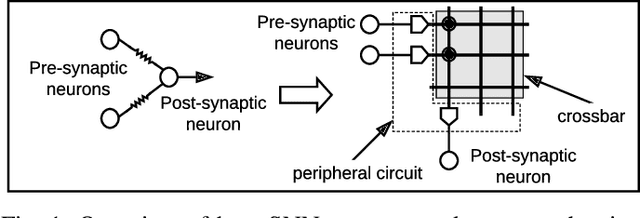
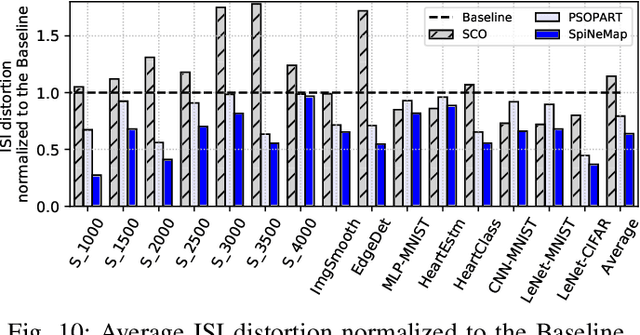
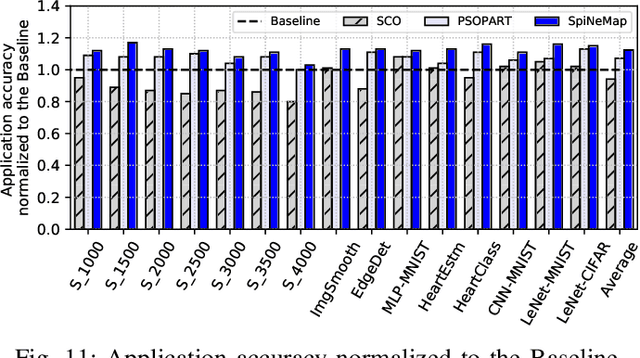
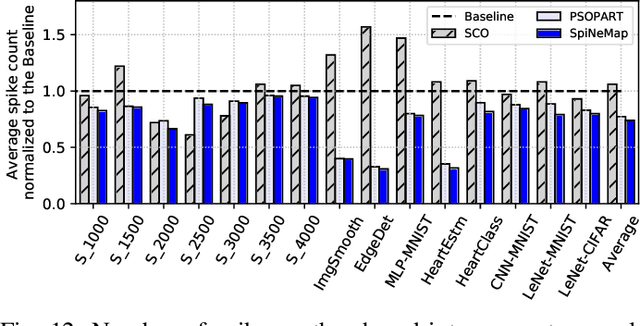
Abstract:Neuromorphic hardware platforms implement biological neurons and synapses to execute spiking neural networks (SNNs) in an energy-efficient manner. We present SpiNeMap, a design methodology to map SNNs to crossbar-based neuromorphic hardware, minimizing spike latency and energy consumption. SpiNeMap operates in two steps: SpiNeCluster and SpiNePlacer. SpiNeCluster is a heuristic-based clustering technique to partition SNNs into clusters of synapses, where intracluster local synapses are mapped within crossbars of the hardware and inter-cluster global synapses are mapped to the shared interconnect. SpiNeCluster minimizes the number of spikes on global synapses, which reduces spike congestion on the shared interconnect, improving application performance. SpiNePlacer then finds the best placement of local and global synapses on the hardware using a meta-heuristic-based approach to minimize energy consumption and spike latency. We evaluate SpiNeMap using synthetic and realistic SNNs on the DynapSE neuromorphic hardware. We show that SpiNeMap reduces average energy consumption by 45% and average spike latency by 21%, compared to state-of-the-art techniques.
Mapping of Local and Global Synapses on Spiking Neuromorphic Hardware
Aug 13, 2019
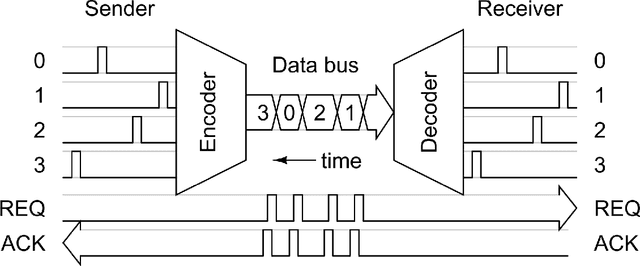
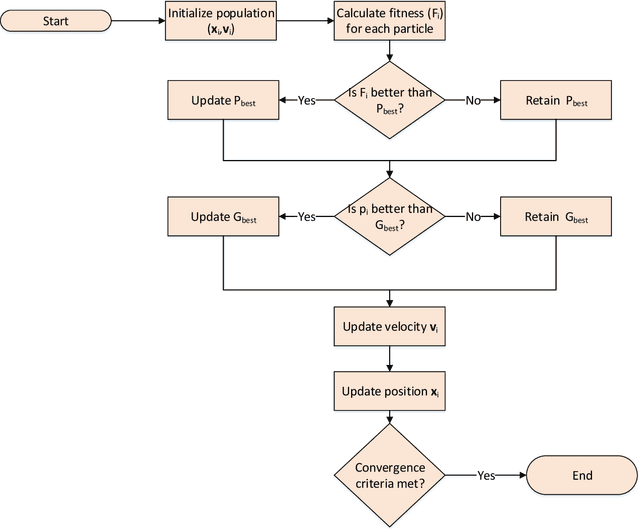
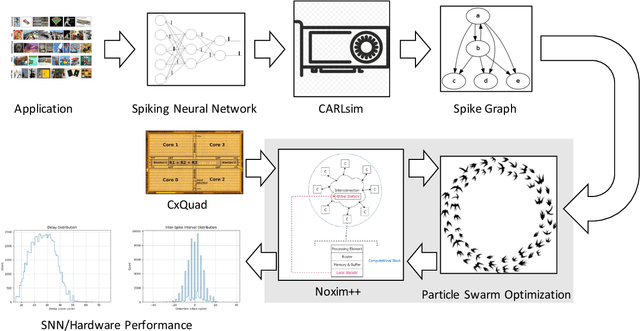
Abstract:Spiking Neural Networks (SNNs) are widely deployed to solve complex pattern recognition, function approximation and image classification tasks. With the growing size and complexity of these networks, hardware implementation becomes challenging because scaling up the size of a single array (crossbar) of fully connected neurons is no longer feasible due to strict energy budget. Modern neromorphic hardware integrates small-sized crossbars with time-multiplexed interconnects. Partitioning SNNs becomes essential in order to map them on neuromorphic hardware with the major aim to reduce the global communication latency and energy overhead. To achieve this goal, we propose our instantiation of particle swarm optimization, which partitions SNNs into local synapses (mapped on crossbars) and global synapses (mapped on time-multiplexed interconnects), with the objective of reducing spike communication on the interconnect. This improves latency, power consumption as well as application performance by reducing inter-spike interval distortion and spike disorders. Our framework is implemented in Python, interfacing CARLsim, a GPU-accelerated application-level spiking neural network simulator with an extended version of Noxim, for simulating time-multiplexed interconnects. Experiments are conducted with realistic and synthetic SNN-based applications with different computation models, topologies and spike coding schemes. Using power numbers from in-house neuromorphic chips, we demonstrate significant reductions in energy consumption and spike latency over PACMAN, the widely-used partitioning technique for SNNs on SpiNNaker.
Heartbeat Classification in Wearables Using Multi-layer Perceptron and Time-Frequency Joint Distribution of ECG
Aug 13, 2019



Abstract:Heartbeat classification using electrocardiogram (ECG) data is a vital assistive technology for wearable health solutions. We propose heartbeat feature classification based on a novel sparse representation using time-frequency joint distribution of ECG. Fundamental to this is a multi-layer perceptron, which incorporates these signatures to detect cardiac arrhythmia. This approach is validated with ECG data from MIT-BIH arrhythmia database. Results show that our approach has an average 95.7% accuracy, an improvement of 22% over state-of-the-art approaches. Additionally, ECG sparse distributed representations generates only 3.7% false negatives, reduction of 89% with respect to existing ECG signal classification techniques.
LocalNorm: Robust Image Classification through Dynamically Regularized Normalization
Mar 04, 2019
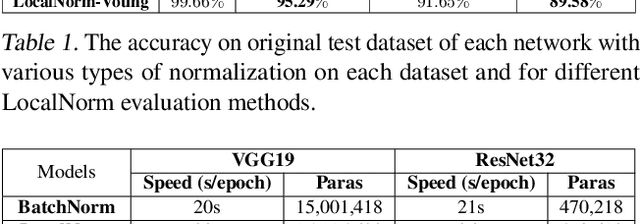


Abstract:While modern convolutional neural networks achieve outstanding accuracy on many image classification tasks, they are, compared to humans, much more sensitive to image degradation. Here, we describe a variant of Batch Normalization, LocalNorm, that regularizes the normalization layer in the spirit of Dropout while dynamically adapting to the local image intensity and contrast at test-time. We show that the resulting deep neural networks are much more resistant to noise-induced image degradation, improving accuracy by up to three times, while achieving the same or slightly better accuracy on non-degraded classical benchmarks. In computational terms, LocalNorm adds negligible training cost and little or no cost at inference time, and can be applied to already-trained networks in a straightforward manner.
Unsupervised Heart-rate Estimation in Wearables With Liquid States and A Probabilistic Readout
Jul 18, 2017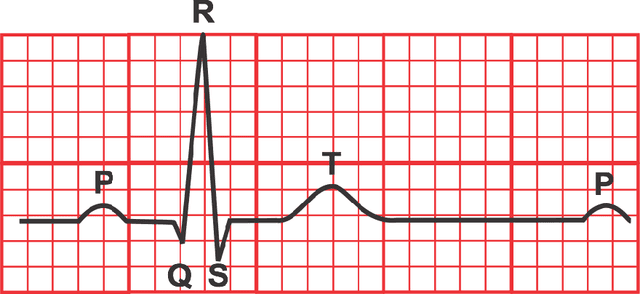
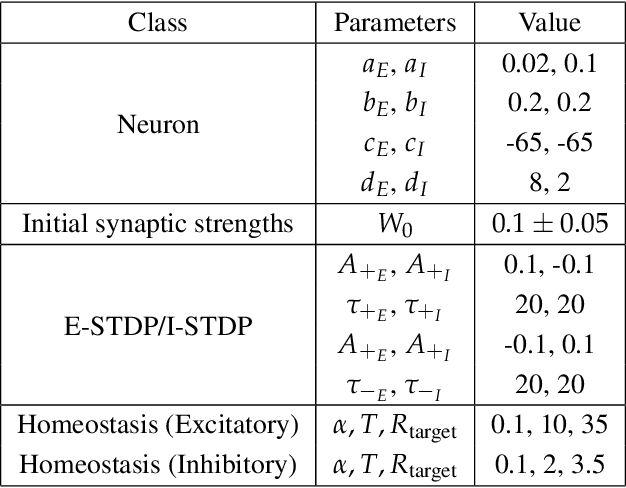


Abstract:Heart-rate estimation is a fundamental feature of modern wearable devices. In this paper we propose a machine intelligent approach for heart-rate estimation from electrocardiogram (ECG) data collected using wearable devices. The novelty of our approach lies in (1) encoding spatio-temporal properties of ECG signals directly into spike train and using this to excite recurrently connected spiking neurons in a Liquid State Machine computation model; (2) a novel learning algorithm; and (3) an intelligently designed unsupervised readout based on Fuzzy c-Means clustering of spike responses from a subset of neurons (Liquid states), selected using particle swarm optimization. Our approach differs from existing works by learning directly from ECG signals (allowing personalization), without requiring costly data annotations. Additionally, our approach can be easily implemented on state-of-the-art spiking-based neuromorphic systems, offering high accuracy, yet significantly low energy footprint, leading to an extended battery life of wearable devices. We validated our approach with CARLsim, a GPU accelerated spiking neural network simulator modeling Izhikevich spiking neurons with Spike Timing Dependent Plasticity (STDP) and homeostatic scaling. A range of subjects are considered from in-house clinical trials and public ECG databases. Results show high accuracy and low energy footprint in heart-rate estimation across subjects with and without cardiac irregularities, signifying the strong potential of this approach to be integrated in future wearable devices.
 Add to Chrome
Add to Chrome Add to Firefox
Add to Firefox Add to Edge
Add to Edge